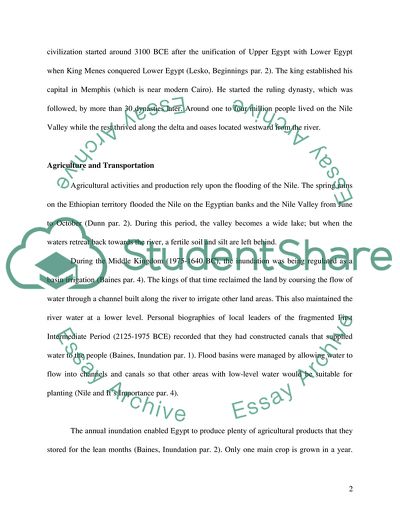Cite this document
(“The Role of the River Nile in Egyptian Civilization Research Paper”, n.d.)
The Role of the River Nile in Egyptian Civilization Research Paper. Retrieved from https://studentshare.org/geography/1761867-please-discuss-how-the-river-nile-informed-every-aspect-of-egyptian-civilization-be-sure-to-include-specific-examples-to-illuminate-your-narrative
The Role of the River Nile in Egyptian Civilization Research Paper. Retrieved from https://studentshare.org/geography/1761867-please-discuss-how-the-river-nile-informed-every-aspect-of-egyptian-civilization-be-sure-to-include-specific-examples-to-illuminate-your-narrative
(The Role of the River Nile in Egyptian Civilization Research Paper)
The Role of the River Nile in Egyptian Civilization Research Paper. https://studentshare.org/geography/1761867-please-discuss-how-the-river-nile-informed-every-aspect-of-egyptian-civilization-be-sure-to-include-specific-examples-to-illuminate-your-narrative.
The Role of the River Nile in Egyptian Civilization Research Paper. https://studentshare.org/geography/1761867-please-discuss-how-the-river-nile-informed-every-aspect-of-egyptian-civilization-be-sure-to-include-specific-examples-to-illuminate-your-narrative.
“The Role of the River Nile in Egyptian Civilization Research Paper”, n.d. https://studentshare.org/geography/1761867-please-discuss-how-the-river-nile-informed-every-aspect-of-egyptian-civilization-be-sure-to-include-specific-examples-to-illuminate-your-narrative.


